What are the chimney caps and how to choose them?

It is not enough to install an attic-roofing structure, having completed all communications and equipping a stove in a country or country house. With the help of additional elements, the decoration and the exterior of the house, its appearance acquire a finished look. This includes the design of the chimney with a pipe head.
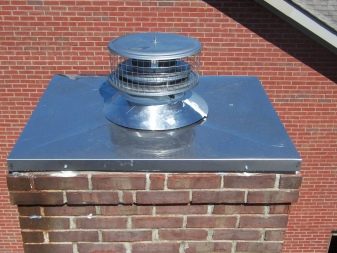
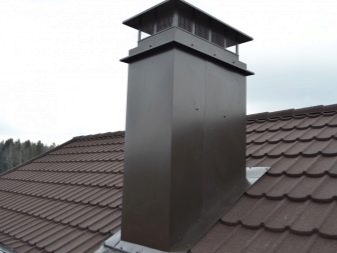
What is it and what is it for?
Heads on the chimney pipe, whether it is built of brick or installed in the form of ready-made, series-connected sections, including industrial and boiler pipes, not only protect the inner walls of the pipe from atmospheric precipitation and its edge of the cross-section from above, but also protect, for example, the roof from the ingress of incandescent sparks formed when the building is fired with wood or coal. This is the first requirement, it is the main one: fire safety on the roof and in the area around the facility.
The usual exit of the stove chimney was not modified initially. It was created only as a means of removing smoke to a height unattainable for people (owner, guests, permanent residents, employees).
In other words, people on the site should not inhale highly concentrated smoke and waste gases, and it does not matter whether it is a fireplace stove, a mini-barbecue with barbecue or a production conveyor, which includes an industrial furnace for melting and smelting, quenching metal products.
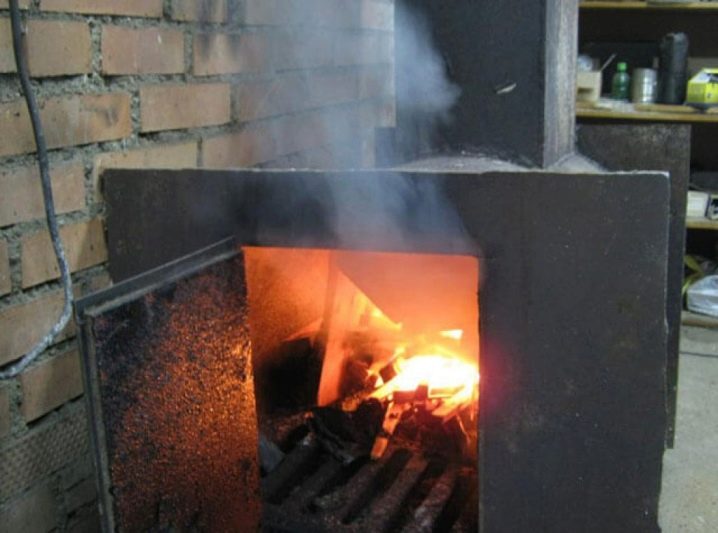
The head of the chimney (chimney) significantly prevents the products of combustion of any fuel from being drawn back into the room (through the same oven). In addition to poisoning people with them, the service life of the chimney is reduced: the accumulated soot, soot, when the draft is restored, is ignited again, burning on the walls of the pipe, additionally heating it.
The head is necessarily equipped with a protective cap, thanks to which the pipe is protected both from rain, snow, hail inside the pipe, and from reverse draft. But not only this cap saves from the latter - the relative height of the pipe itself and its location on the roof, calculated according to the requirements of GOST and SNiP, TB and PPB, are also important.
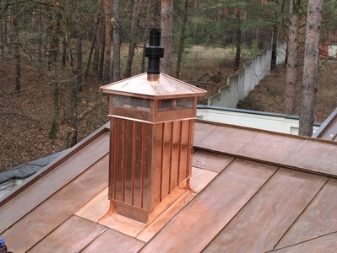
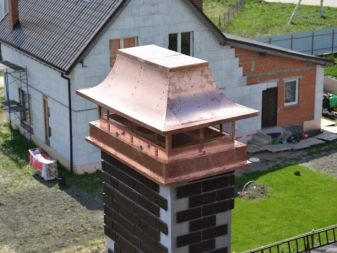
Species overview
Whether the pipe will be brick or stainless steel depends on the project. Stove heating is just one of the alternatives to gas heating. But for both, it is important to choose a chimney of the required diameter and the corresponding head. Common pipe diameters are 120/200 mm across (round steel pipe). For low-power furnaces and gas boilers, there are also pipes with a small circumference - 60/100 mm, but this solution is carefully recalculated.
The rotating head facilitates maintenance and cleaning of the chimney. But only the circular head rotates: the oval, square, rectangular can only be rearranged with the other side - remove it and, after cleaning it from soot deposits, install it on the other side.
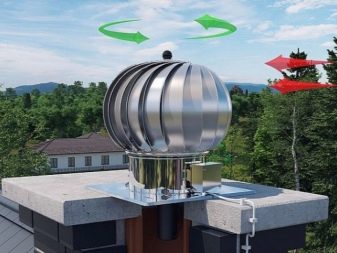
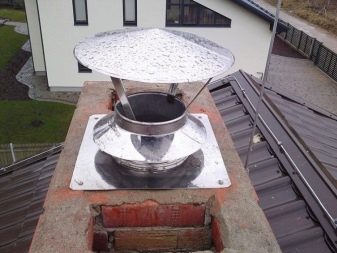
The dimensions of the cap, for example, with a 13-centimeter (in diameter) pipe, can reach from 20 to 25 cm. The shape of the umbrella (cover, main part of the head) resembles a circular slope with the top in the center. Umbrella holders - strips of the same stainless steel - are three connecting (vertical) elements located at an angle of 120 degrees. The resulting structure is attached to a piece of pipe of the same diameter, which is a shortened section of the chimney with a length of, as a rule, no more than 10 cm.
The rigidity of the head is sufficient for it to "sit down", like the same section on the previous one and located even lower, rather tightly - and at the same time it did not break out of its place even during a hurricane. The disadvantage of any heads is additional, albeit not too large, windage, which tends to "fill up" the pipe to one side in strong winds.
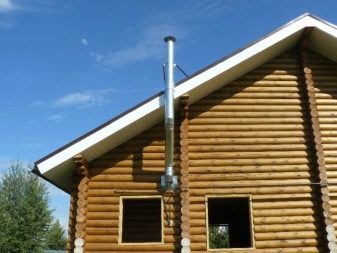

However, more often rigidly fixed heads are used. You can twist them by slightly loosening them, removing them from the upper section of the chimney.
The spinning ones can be combined with the simplest weather vane indicating the direction of the wind: their rotation is provided by a lightweight design. The hood of such a pipe rotates in the direction where the wind pushes it: the design of such an umbrella has a raised element that creates the necessary windage, which largely prevents the wind from blowing smoke back into the stove (and into the room where it is located).
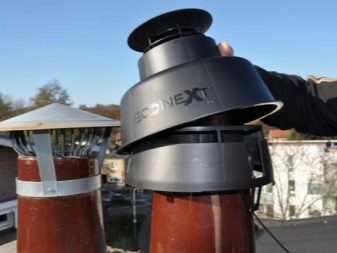
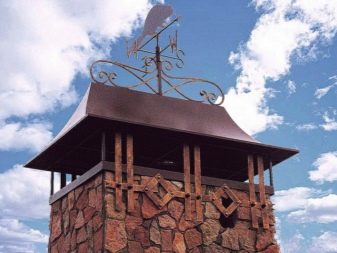
By form
The rectangular head is rigidly fixed to the top of the pipe of the same shape. A variety of it is a square head. It cannot spin under any circumstances. He "sits" on the top of the pipe no less rigidly than his conical (with a cone-shaped umbrella) fellow. Rectangular design - slotted design of the smoke passage, due to which the smoke dissipates before the sudden back draft would draw the combustion products back into the chimney.
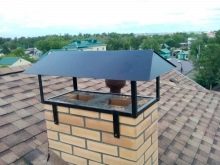

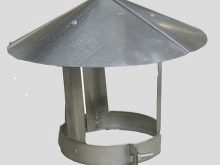
By the presence of additional elements
The main additional element on the head is the deflector. Its purpose is to prevent back draft from forming, depending on the direction of the wind and the location of the pipe relative to the roof slope. In practice, a simple circular deflector is often used, which is a flat strip of steel wrapped in the middle in the plane in which the lower edges of the umbrella are located.
Also, the deflector protects the inner and outer walls of the head from oblique showers and snow drifts in stormy or hurricane winds. Installing a deflector and umbrella on the head is important. However, the deflector may turn out to be slotted, which cannot be said about the head umbrella. Fragmented, “slotted” emission of smoke and exhaust gases is the safest solution from the point of view of the laws of physics, which are valid for stove and boiler heating.
An additional measure to protect against a sudden fire in the area due to the abundance of sparks is the installation of a grid. It is a spark arrester, but does not replace the deflector completely. The disadvantage of the mesh is its relatively quick clogging with soot. Heads can be equipped with a folding umbrella.
To clean such a head - and the upper section of the pipe - there is no need to remove it from it.
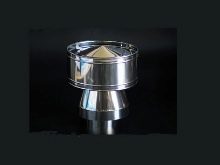
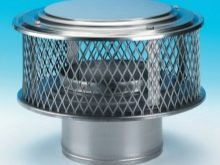
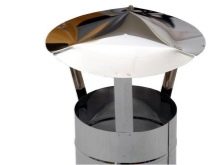
Materials (edit)
A cast-iron head, as well as a head made of forged steel, as well as a copper (or copper-plated) head, is noticeably inferior to a stainless steel. Stainless steel, unlike copper and cast iron, which slowly but surely oxidize, can last up to 35 years, provided that the chimney is long enough and the stove does not overheat during the heating of the premises.
If a secondary ignition (afterburning) of incompletely burnt wood combustion products (or other fuel) is suddenly formed in the pipe, then the stainless pipe sometimes gets red-hot, which can, with the simultaneous rain or snow, significantly spoil its appearance and lead to the loss of its properties by the stainless steel ...
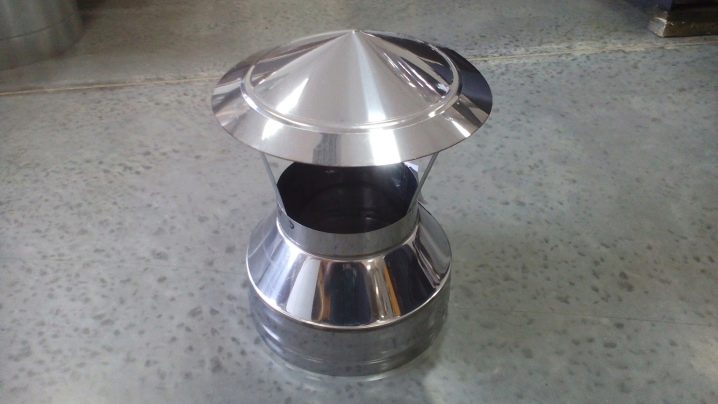
To prevent such a situation, a two- or three-chamber pyrolysis furnace is used, in which the afterburning of unburned exhaust vapors and gases formed from solid fuel occurs not in a pipe, but in the technological compartments of this furnace. In addition, the copper head will simply melt when the temperature rises to 1085 degrees - while the stainless steel will heat up, but will stand.
Stainless steel caps have taken over the oven accessories market by leaps and bounds. They are rightfully considered one of the best: a thin-walled stainless steel (up to 1 mm) will last 20-30 years without any problems, and you do not need to change either the section of such a pipe or the head itself.
The most expensive accessories are titanium. They will serve you almost your entire life. Having put such an accessory once, you will find that it will serve your children and grandchildren - as part of the entire stove heating system.
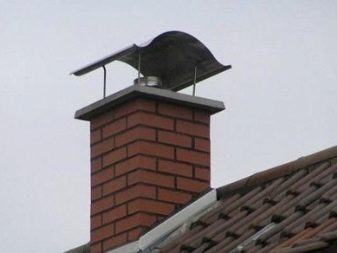

Nuances of choice
Don't skimp on stove accessories. It is best to choose the highest quality, best complementary items for your money. Without a top, the stove and chimney can work only when there is complete calm.
If a stainless steel head was not found, then the worst, but tolerable, temporary solution would be a galvanized or cast iron option.
It is permissible to choose metal heads that are larger in diameter than the steel pipe section.
The purpose of the head is to increase the efficiency of a simple stove from 60 to 70-80%. This effect is achieved by slowing down the draft, due to which more heat is created and retained in the house itself, rather than dissipating outside it.
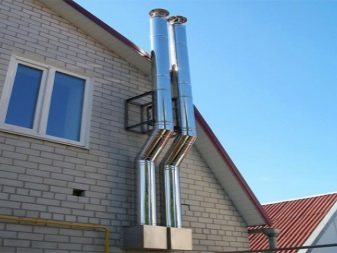
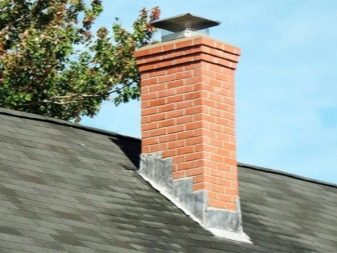
Mounting
So that the head does not prevent the combustion products from leaving the house / building in time, observe the following rules when installing the pipe.
- Step back from the roof ridge when installing the pipe by less than 1.5 m, make sure that the last section is at least half a meter higher than the ridge itself. With an offset of up to 3 m, both the pipe and the ridge are at the same height. With an offset of 3 m - 10 degrees lower - in relation to the ridge and the horizon.
- The over-roof part of the pipe with a length of more than 120 cm is fixed on at least three stretch marks - in this case, the hurricane will not knock it down.
- The order of installation of the head is as follows: lower butting part, holders, umbrella, deflector (if any) - but not vice versa.
- Checking the health of the chimney - firing up the stove in a hurricane wind: there should be no reverse draft.
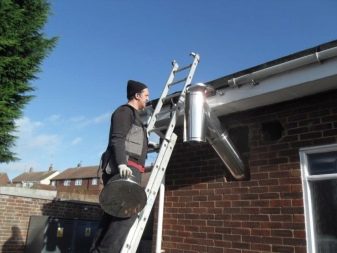
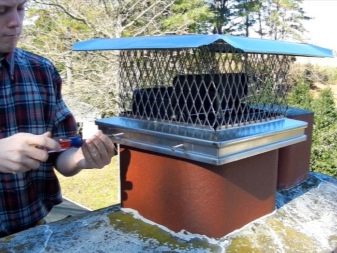













The comment was sent successfully.